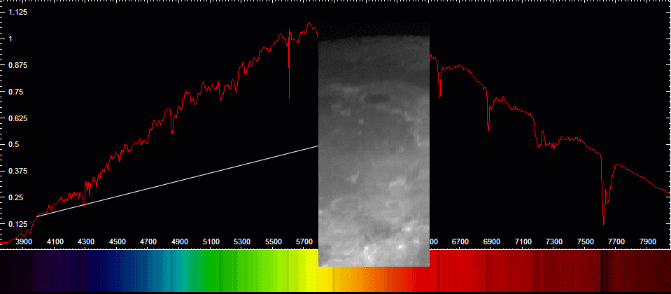
image by Jose Ribeiro, Portugal
This is neat. Jose Ribeiro and his talented colleagues Alberto Fernando and Filipe Alves are experimenting with obtaining lunar images in very narrow spectral bands. They use a CCD camera to record the Moon while it moves slowly past the slit of their spectragraph. Read Jose’s website to see how they cleverly match the Moon’s movement past the slit with the readout of the camera. As the demonstration above shows, they capture images at different wavelengths (only 3.4Å/pixel). Note how the highlands around Tycho change in brightness according to wavelength. This is potentially a great refinement over color filter imaging, which has the advantages of being much faster and having higher resolution, because imaging in wavelengths that are specific to known minerals can more precisely identify those minerals. This work is just in its early stages. Hopefully improvements in resolution, and then calibrating to Apollo sites, will yield detailed maps of surface compositions. In any case it is remarkable work!
Technical Details:
9.25″ Schmidt-Cassegrain + KAF3200 camera + Littrow spectrograph with a diffraction grating of 300 lines per mm.
Related Links:
Jose’s Amateur Astrosphysics website
COMMENTS?
Click on this icon File:PostIcon.jpg at the upper right to post a comment.



